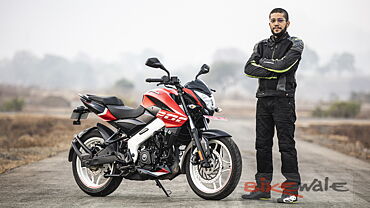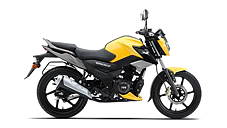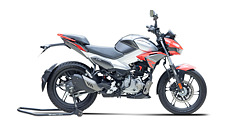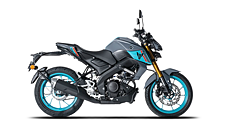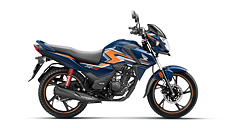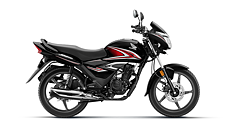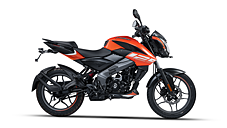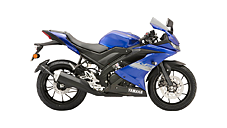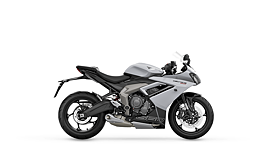Introduction

To keep up with the newest emission norms, Bajaj Auto has introduced the OBD2-ready (not compliant) Pulsar NS200 in the Indian market. Apart from the required hardware to comply with the new OBD2 norms, the 2023 Bajaj Pulsar NS200 also benefits from a revised suspension setup. It now comprises upside-down front forks and improved rider safety with the addition of the dual-channel ABS.
While the hardware has come at par with the rivals, and the suspension setup better than the competition, the 2023 Pulsar NS200 still lacks features that its closest threat, the TVS Apache RTR 200 4V, has to offer. We tested the newest iteration of the Bajaj Pulsar NS200 at the company’s Chakan test track and general roads around the manufacturing facility for a test ride review. Here are its first impressions.
The Visuals

The styling has received the least changes, and the 2023 iteration of the motorcycle looks very similar to the NS200 that we have seen over the past years. Thus, the 2023 Pulsar NS200 continues to feature a single-pod headlight with twin DRLs, matching graphics for the headlight cowl, fibre fuel tank with a 3D logo and shrouds that give the unit a muscular look, split-style seats, a two-piece pillion grabrail, an underbelly exhaust, and 17-inch alloy wheels that feature the same pattern as the Pulsar N250. While the styling remains unaltered, the newly added upside-down front forks give the motorcycle a more muscular look.

The build quality is satisfactory, and the 3D logo gives the motorcycle a more premium touch. Due to the unavailability of a Bluetooth-module, the switchgear is basic as well but the backlit setup is attractive and useful after dark. Considering the modern styling that the newest Pulsar range packs, it would have been great to see a more modern look for the 2023 Pulsar NS200. But the existing model does not look too out of style either and still makes its presence felt in a segment that comprises the likes of TVS Apache RTR 200 4V. Where it doesn’t match the Apache RTR 200 4V is the features department.
The Package

Similar to the design, the feature list, too, remains unchanged, which may not appeal to all buyers. Rivals such as the TVS Apache RTR 200 4V and the Hero Xpulse 200T 4V come with LED lighting and a Bluetooth-enabled fully-digital instrument cluster. These consoles work with their respective dedicated smartphone applications and offer access to call notifications, message notifications, and even turn-by-turn navigation.

In contrast, the 2023 Pulsar NS200 continues to use a semi-digital console that comprises an analogue tachometer and a compact digital display. Do note that Bajaj Auto has added a few more data points to the digital display, and it now shows real-time fuel economy and distance to empty figures. Then, there are two trip meters, an odometer, a fuel gauge, and a gear position indicator on the screen.

The mechanical specifications remain unaltered too, and the 2023 Pulsar NS200 continues to use the 199cc, single-cylinder, liquid-cooled motor with four valves and three spark plugs. Linked to a six-speed gearbox, this engine produces a maximum output of 24.1bhp at 9,750rpm and a peak torque of 18.7Nm at 8,000rpm.

Notably, as mentioned at the start of this first ride review, the 2023 Bajaj Pulsar gets hardware improvements, and the latest iteration of the motorcycle uses upside-down front forks instead of conventional units on the previous version. On the other hand, it retains the preload-adjustable monoshock at the back. The braking setup includes disc brakes on both wheels, while the enhanced safety net now comprises dual-channel ABS instead of the single-channel unit on the older model. Bajaj Auto also claims that the new motorcycle is three kilograms lighter than its predecessor. How does this new package work?
The Ride

Before we explain the revised suspension setup, let us detail the engine characteristics. The engine characteristics remain unchanged, and the short-stroke motor enjoys staying in the higher rev band. It starts pulling away cleanly from 3,000rpm with a noticeable step up in the acceleration post 5,500rpm. In the sixth gear, the Pulsar NS200 can cruise at 80kmph at just 5,500rpm, while the 100kmph mark arrives at 7,000rpm. At Bajaj’s Chakan test track, we maxed the motorcycle at 139kmph. The braking setup partially complements this performance, and the feedback from the front disc feels nice and progressive. On the other hand, the rear disc feels almost non-existent when used solo.

The suspension setup, similar to the previous models, is tuned for spirited riding, and it thus feels firm. But nowhere during this brief ride experience did the tuning feel too stiff or harsh, and one can easily live with the setup. Notably, the previous version of the motorcycle that my colleague Neil Nair rode was termed to have a very hard suspension setup, but I did not find any such issues with the 2023 model. This tuning of the suspension works well with the perimeter frame and comes in handy while going aggressive around the corners, making the motorcycle feel agile and confidence inspiring. Now, do note that Bajaj Auto had removed the centre stand for track ride purposes, and thus we cannot comment about the cornering clearance with this piece of hardware.
Should you buy it?

Despite its unchanged design, the Bajaj Pulsar NS200 is an attractive motorcycle, and its liquid-cooled four-valve engine complements the aggressive styling. The handling feels agile, the vibrations are now only limited to the footpegs, and the clutch lever feel is light and easy, all of which enhances the overall ride experience. The newly added upside-down front forks make the Pulsar NS200 a better ride and more visually appealing. These points make a strong case for the roadster motorcycle.

But the feature list is nowhere close to the competition, and the Pulsar NS200 will not give you the bragging rights as the rivals, such as the TVS Apache RTR 200 4V. Sure, there is added data like the gear position indicator and the real-time fuel economy numbers, but it still lacks Bluetooth connectivity which brings a whole host of features to the motorcycle. But save for the feature list, the Pulsar NS200 is a very likeable motorcycle, and it should be among your top picks if you’re upgrading from the 100-150cc class of vehicles in the Indian market.
Photography by Vikrant Singh
Gallery
1/31
Bajaj Pulsar NS200 Left Front Three Quarter
Double Tap to Zoom

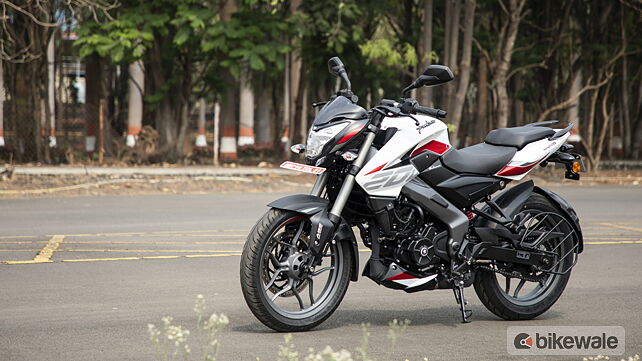









![[object Object] ThumbNail Images [object Object] ThumbNail Images](https://imgd.aeplcdn.com/642x361/n/cw/ec/144705/bajaj-pulsar-ns-left-front-three-quarter28.jpeg?isig=0&wm=3&q=80)
![[object Object] ThumbNail Images [object Object] ThumbNail Images](https://imgd.aeplcdn.com/642x361/n/cw/ec/144705/bajaj-pulsar-ns-left-side-multifunction-switchgear20.jpeg?isig=0&wm=3&q=80)
![[object Object] ThumbNail Images [object Object] ThumbNail Images](https://imgd.aeplcdn.com/642x361/n/cw/ec/144705/bajaj-pulsar-ns-right-front-three-quarter18.jpeg?isig=0&wm=3&q=80)
![[object Object] ThumbNail Images [object Object] ThumbNail Images](https://imgd.aeplcdn.com/642x361/n/cw/ec/144705/bajaj-pulsar-ns-left-side-view16.jpeg?isig=0&wm=3&q=80)
![[object Object] ThumbNail Images [object Object] ThumbNail Images](https://imgd.aeplcdn.com/642x361/n/cw/ec/144705/bajaj-pulsar-ns-right-front-three-quarter15.jpeg?isig=0&wm=3&q=80)

